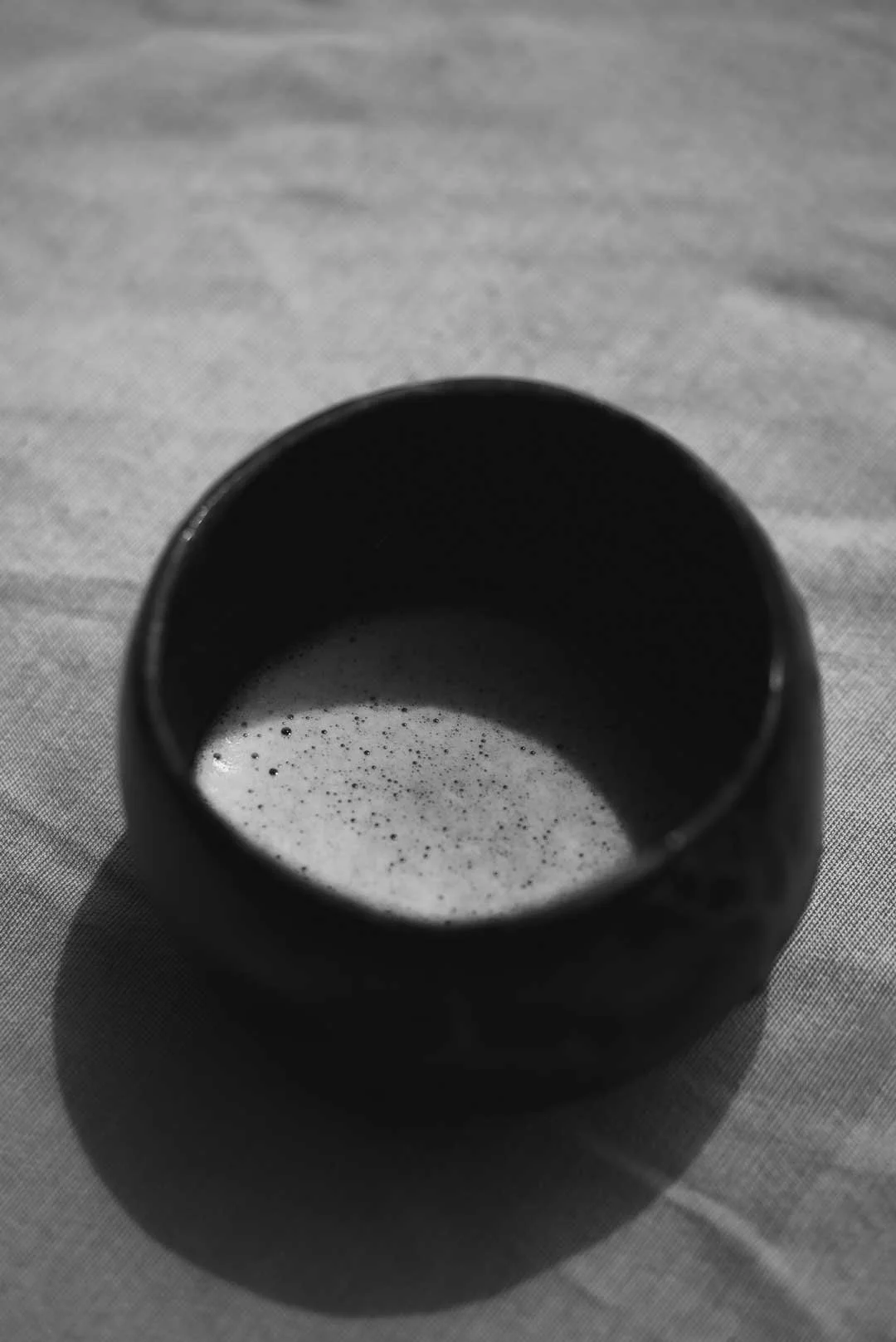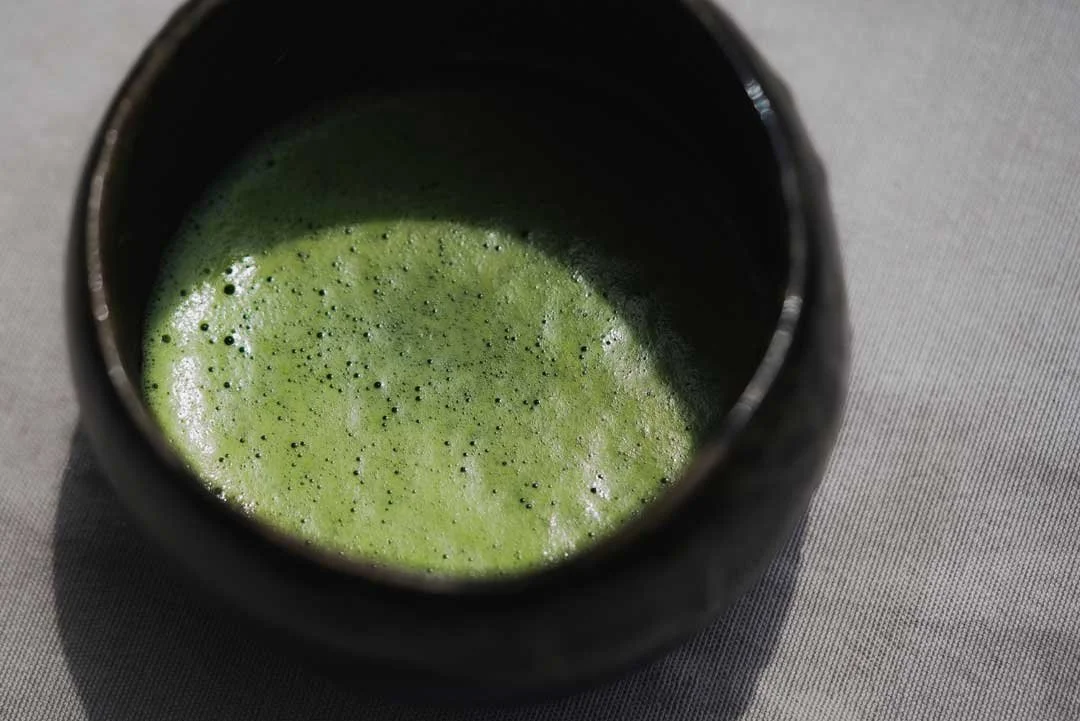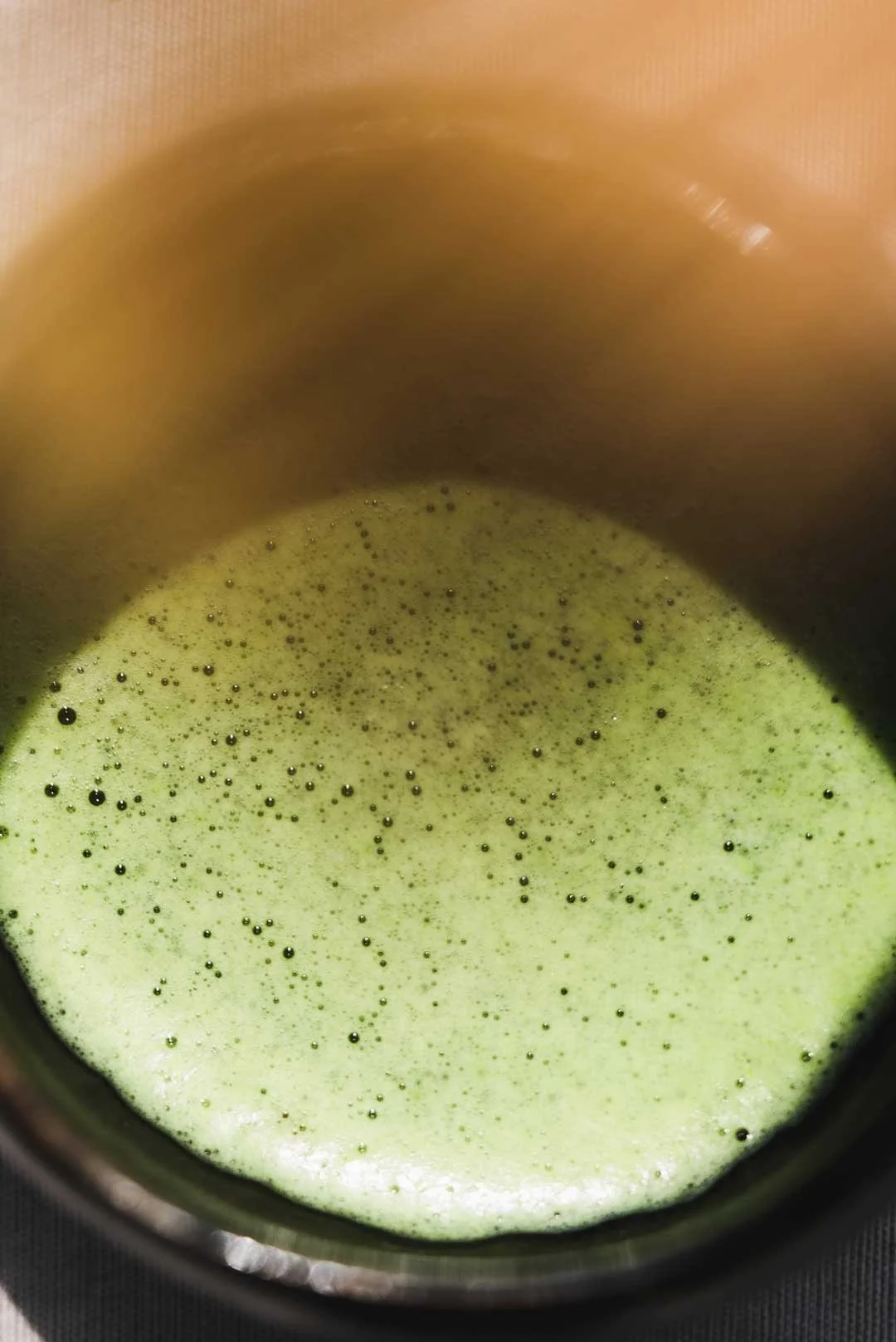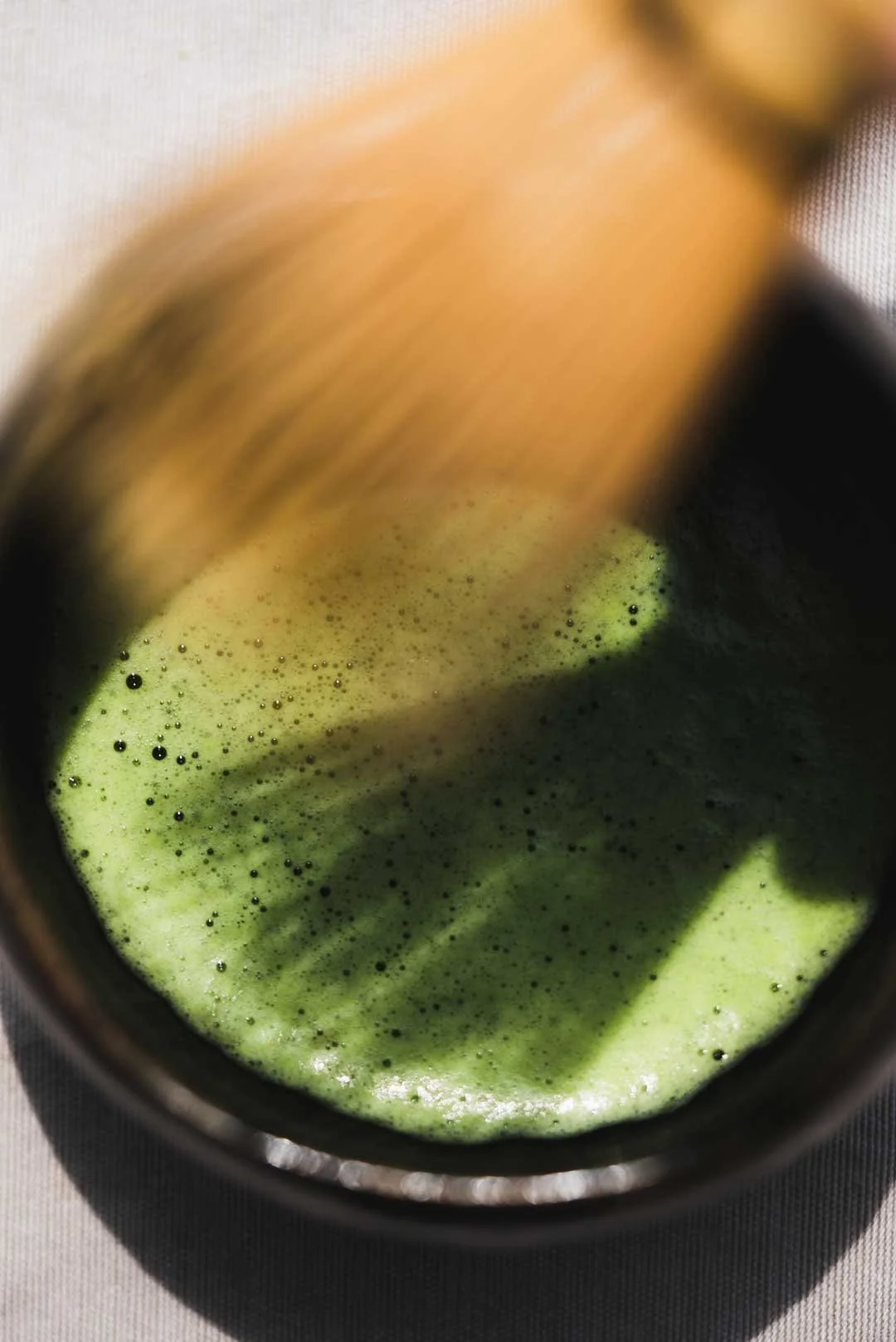How much Caffeine is in Matcha?
Does a cup of Matcha contain more caffeine than coffee?
How does it compare to regular tea?
In this article, we are going to dive into the key facts surrounding caffeine in Matcha.
So you can learn how much caffeine is in your Matcha tea.
(34 mg of caffeine on average… if you want to skip ahead.)
There’s so much chatter about Matcha that it can be difficult to sieve through the noise.
But before we start looking at the caffeine content of Matcha…
Let’s quickly recap on exactly what Matcha is.
What is Matcha?
Matcha is essentially a green tea that’s been shaded for around 20 days before being plucked, steamed, and ground into powder.
With most teas, the leaves are steeped in water, then discarded after brewing one or more times.
But with Matcha, you’re consuming the entire leaf.
This means there’s more caffeine in a cup of Matcha than a cup of brewed green tea.
Before we dive deep into how much caffeine is in Matcha…
Here’s an abbreviated guide to what Matcha is.
What Makes Matcha Unique
The way in which this tea is grown also makes it incredibly unique.
The different approach begins at least 20 days ahead of picking by covering the tea fields with a shade.
This is to shield the tea plants from the sun using fabrics.
But why do growers do this?
How does a lack of sunlight affect the Matcha tea plants?
This long period without sunlight results in:
A higher level of chlorophyll, making the leaves almost neon green.
A higher level of L-Theanine amino acid in the leaves, resulting in a sweet, savory taste.
Lower levels of Catechins, the astringent antioxidant found in abundance in Green Tea.
Chlorophyll is especially crucial to a plant’s survival because it needs it for photosynthesis to occur.
Extra Info: Photosynthesis is the process that green plants use to convert sunlight into chemical energy that can be used to fuel the plants' growth. The light energy liberates electrons from water molecules, which combine with carbon dioxide to form glucose.
When the tea plant is deprived of this chemical, it goes into panic mode… And starts overproducing chlorophyll in order to stockpile.
This chemical, alongside theanine, contributes to some of the unique health benefits that can be gained from drinking Matcha.
Picking the Leaf
Typically, the tea leaves used to make Matcha are picked from early to mid-May or early June.
Once the harvesting season starts, the leaves are:
Handpicked.
Carefully dried.
Destemmed and deveined.
Then slowly stone-ground into very fine tea powder.
There is definitely an art to producing exceptional Matcha.
But even more important is the blending.
Just like how Scotch is blended from many different individual scotches…
Matcha is blended in the same way.
Where Matcha is Made
Tea-growing prefectures in Japan, like Kyoto and Aichi, set the standard when it comes to producing quality Matcha.
To know more about special Matcha Terroirs, check out our dedicated article 5 best Cities For Authentic Matcha in Japan.
Outside of Asia, countries like the US are starting to get a taste for these special blends of tea.
Matcha Tea’s potential medicinal and therapeutic benefits are attracting interest from the health and wellness industry.
What are the Health Benefits of Matcha Tea?
So at Ooika, we focus mainly on drinking tea for the taste and experience.
We’re less interested in all the health claims.
That said, here are a few spark notes:
Matcha contains an abundance of catechin, a super ingredient contributing to many of the potential health benefits of this tea.
Catechin is a class of plant compounds in tea that act as natural antioxidants.
Antioxidants help to stabilize harmful free radicals.
In other words, they can fend off compounds that cause cell damage and chronic disease.
Matcha has a high concentration of a particular catechin called EGCG (epigallocatechin gallate).
According to recent research, drinking matcha provides you with 137 times more EGCG than drinking China Green Tips green tea.
That’s one staggering statistic!
Drinking Matcha has the potential to increase your antioxidant intake.
This could help to:
Protect you from cell damage.
Lower your risk of several chronic diseases.
Why Caffeine in Matcha is Good
Caffeine actually plays an important role in materializing some of Matcha’s health benefits in partnership with L-theanine.
On its own, L-theanine is an effective nootropic in Matcha.
This means that L-theanine may improve cognitive functions, including memory creativity and motivation.
When combined with the caffeine in Matcha, you may also experience heightened focus, awareness, and energy.
Caffeine and L-theanine are known for their synergistic effect.
So they work together to provide Matcha Tea drinkers with a variety of benefits.
Caffeine: a Bad Wrap
In the West, we often think of caffeine in a limited way.
Either as:
A high-octane power boost for late nights.
Or as something to be avoided or weaned off from.
But in China or Japan, it’s looked at far more holistically.
It’s also why decaffeinated tea isn’t consumed there.
Caffeine in tea is one of the hundreds of chemicals that work in harmony to produce tea’s soothing effects.
Whereas in the west we like to isolate chemicals and package them in pill form…
And we tend to become obsessed with the part instead of the whole.
The Whole, not the Part
I want to share an interesting tidbit about our obsession with the part, not the whole.
Carrots are rich in beta-carotene…
It’s a pigment that colors carrots orange.
Carrots have been shown to reduce cancer rates.
So, if we think like a reductionist, the best thing we can do is isolate beta-carotene in a supplement pill and take it, right?
Actually, no.
Doing so is disastrous.
Taking pure beta-carotene supplements is tied to an increased risk of cancer.
But the best advice I can give you as a Tea Drinker (and a past owner of a bio-med tech company) is:
To think about tea more broadly.
And worry less about individual components of the brew.
How Much Caffeine Content is in Matcha Tea?
A typical Matcha fix provides around 34mg of caffeine.
This is the same as half a cup of coffee.
Most importantly, the tea in caffeine doesn’t affect you like the caffeine in coffee.
(Again, because of the interaction between caffeine and L-theanine.)
So while 2 cups of matcha would be the same as 1 cup of coffee in terms of amount…
The “buzz” would be a lot different.
More relaxed and focused rather than zippy and jumpy.
Extra Info: 34mg is an approximate number. Knowing that 1g of matcha contains around 25mg of caffeine and that it takes 1 to 2g of tea powder to prepare 1 serving, your bowl of matcha can contain anywhere from 25 to 50g of caffeine.
Also, if you’re pregnant (or know someone who is)...
We interviewed a doctor and wrote an entire article about Drinking Matcha During Pregnancy.
And another one about the benefits of Drinking Matcha On Your Period.
Drink Matcha with Us
In the end, caffeine in matcha is a good thing.
It works in harmony with the rest of matcha’s compounds.
And provides you with a stable boost of energy.
And no caffeine crash whatsoever.
That’s probably why more and more people switch from coffee to the ¨green team¨.
Getting Started with Matcha
If you’re a beginner, it can be difficult to find where to buy fresh Matcha.
At Ooika, we grind Matcha fresh using traditional stone mills.
And… everything we sell is:
From renowned Matcha Terroirs of Japan
Freshly ground here in the US with traditional stone mills
Properly packed and vacuum-sealed for optimum preservation
And of course, it tastes amazing.
You can buy ceremonial Matcha here.
Give it a try then drop us a comment below to let us know your impression.
MORE ON MATCHA







